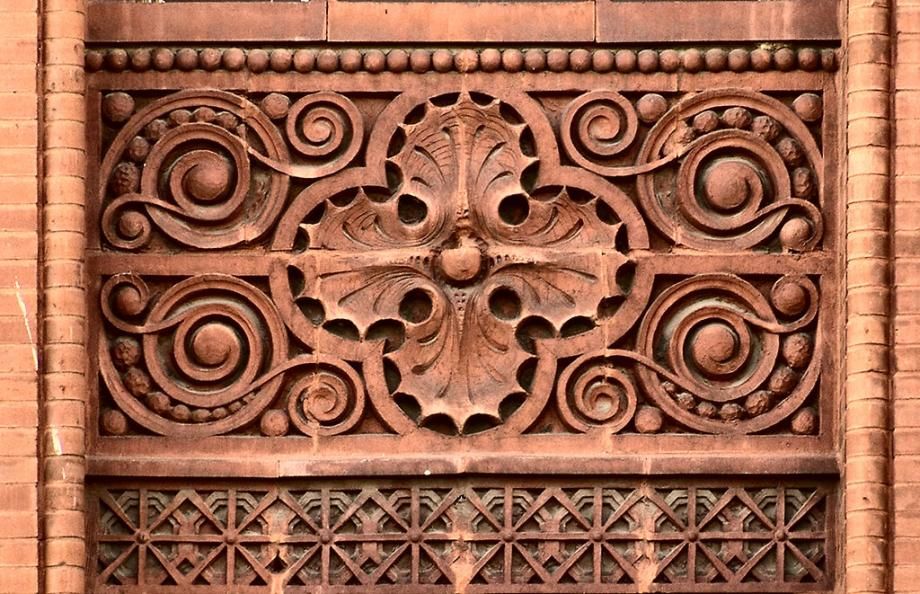#7222. Terracotta Façade Relief with Floral-Spiral Ornament

The image showcases an exquisite example of decorative architectural relief work in a terracotta tone. This refined fragment of façade ornamentation demonstrates exceptional craftsmanship in stone or terracotta carving.
The central composition features a four-petaled floral motif resembling a cross, with meticulously detailed contours and deep incisions creating an expressive interplay of light and shadow. Surrounding this central element are symmetrically arranged elegant spiral volutes forming a dynamic wave-like pattern. Each spiral is framed by a row of beads, adding textural depth to the composition.
The lower portion of the panel contains a geometric ornament of intersecting diagonal lines, creating a rhythmic lattice pattern. The entire composition is framed by relief vertical elements reminiscent of classical order fluting, while the upper section is crowned with a row of decorative spheres.
This type of architectural decoration is characteristic of neoclassical or neo-Romanesque architecture, commonly applied to public buildings, churches, or palaces from the late 19th to early 20th century. The warm terracotta hue emphasizes the plasticity and expressiveness of the carved ornament, lending both monumentality and elegance to the façade.